BT Extend UK Digital Voice Service into Yorkshire & Humberside

Broadband ISP BT has today confirmed that they’ve extended the ongoing region-by-region deployment of their new Internet Protocol (IP) based home phone service, Digital Voice, to include the Yorkshire and Humberside areas of England. After this, we expect Northern Ireland to be next.
Customers will be contacted at least four weeks before being upgraded, to help ensure they’re ready for the switch. The regional approach is being supported by general awareness communications, and advertising campaigns, delivered across local and regional media to help explain the steps required to make the move to Digital Voice (i.e. users will plug their handset into the broadband router or an ATA [analogue] adapter instead of a wall socket – more details). BT will also be present on high streets and at local town hall drop-ins to help explain the change.
The Digital Voice product was designed to replace BT’s old analogue phone service, which will cease to function once the Public Switched Telephone Network (PSTN) is completely withdrawn by December 2025. After that point, all future phone services – whether delivered via copper (ADSL, FTTC, G.fast) or Fibre-to-the-Premises (FTTP) lines – will become IP (internet) based and require broadband to function.
Advertisement
Vicky Hicks, Senior Engagement Manager at BT, said:
“BT customers in Yorkshire and the Humber will benefit from a tried and tested service, with around two million BT customers already having made the switch and benefitting from the many advantages of digital home phones from advanced scam call filtering capabilities to crystal-clear call audio.
For almost everyone, moving to Digital Voice will be a simple and free transition with no home installation work required. If you feel you need additional support with the transition or you think you are vulnerable, please do tell us. We will be with you every step of the way.”
BT won’t be proactively switching anyone who falls under the below criteria, where it has this information available:
- Customers with a healthcare pendant
- Customers who are over 70
- Customers who only use landlines
- Customers with no mobile signal
- Customers who have disclosed any additional needs
Mark is a professional technology writer, IT consultant and computer engineer from Dorset (England), he also founded ISPreview in 1999 and enjoys analysing the latest telecoms and broadband developments. Find me on X (Twitter), Mastodon, Facebook, BlueSky, Threads.net and Linkedin.
« Building Digital UK Agency Publish Corporate Plan for 2023 to 2026





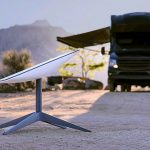



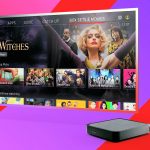


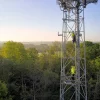
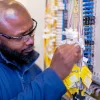

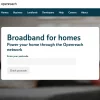





































We’ve been on BT Digital Voice since we went FTTP 2 years ago and it has been no problem at all and I don’t expect it to cause much problem to the vast majority of people. I just hope they come up with a simple product that has a broadband connection on 1 side and a phone port on the other so a similar service can continue for those who only require a fixed line phone (which I believe was about 3% of users in 2019).
seems unlikely to me that BT would go to the trouble of buying/building a new device for a niche use case, especially as people are generally dumping landline phone services anyway.
Far easier to just supply the same smart hub as they do for broadband customers, but with internet access disabled. Or even easier still – just bundle a very slow internet service with it at no extra cost?
0.5/0.5 Mbp/s symmetrical is already an Openreach service for exactly that.
As for a device with an RJ-45 & RJ-11 only then the only realistic option I see being available is for a white label box produced on mass in China from a vendor on Alibaba that has incredibly basic firmware with remote configuration (TR-069, others), or a box that supports that along-with custom firmware flashing that could be done in here in England (you know with security concerns in mind).
Less realistic is putting something like that together ‘from scratch’. Hardware probably will not be the biggest headache but quite inconvenient otherwise for an organisation of their size to want to do i.e. do BT want to reallocate existing engineers to make it or get some extra guys in on a six month contract. Is is a niche product after all. The firmware could be a stripped down version of what BT have already have for their routers, or failing that, a customised open-source router OS with the unneeded bits removed.
You could in theory however put together something like that using a micro-controller and some sort of hat with a ethernet port and phone port. Pico or ESP32 are cheap enough & I can’t imagine a device like that needing a huge amount of processing power or memory. I don’t know though because I would not know how to go about doing that. Somebody else would need to advise
Is it possible to connect these VOIP phones to a third party router, or is it a requirement to have a Home Hub?
BT Digital Voice requires that you use the Homehub 2 either with their advanced digital handsets or connecting to the green telephone socket on the back, if you have internal wired extension sockets you can rewire them to plug into the green telephone socket which I have done as well as using their handsets.
BT seem to be very much non-committal/vague regarding the solution regarding their landline only customers. As Dave has said they will probably use some form of ONU. I believe Virgin Media give their landline only customers a router.
That’s correct, VM supply a hub to landline only customers. Supplying a remarkably energy intensive DOCSIS hub that uses around 12W continuously (and takes about 6 minutes to come on line after startup) is not a good thing. That’s about £30 a year in additional power costs merely to keep a phone connected.
Although I would guess that VM must have very few landline only customers.
@Andrew G Virgin don’t have many landline customers and I doubt they have much interest in keeping them landline only. The power consumption of the hub isn’t ideal but isn’t much of a problem
@Fibre Scribbler BT haven’t said much about their landline only customers though they’ve said that they’ll provide phones with built in 4G and battery backups. Id imagine that they’d provide the normal BT hub with WiFi turned off.
PS: an ONU (also called ONT) is what converts the light to a copper signal for FTTP, the box which converts analogue phones to digital is an ATA (analogue telephone adapter) 🙂
Sorry, should have been, “to their landline only customers” not “regarding” as in my last post. Best Regards, Fibre Scriber
Whatever the outcome is for landline only customers, I believe they may be last in the queue when it comes to Digital Voice.
We’ve had digital voice for about a year or so. This was when BT was offering free handsets and plug in powerline line adaptors for people who’s phone wasn’t near their router, I’m not sure if they still do this. It’s working fine for the most part. The most annoying thing for my parents is having to dial the area code even for local calls, and if I ring the landline, it rings on my mobile 3 times before the landline actually starts ringing.
You have to remember that under voip from a technical view area codes are largely irrelevant. Ofcom have said they will generally be sticking with area codes for geographical indication but the chances are that the voip server will be miles away. The only indication it’s any kind of landline is that it starts 01,02 or 03. In a lot of ways the voip line should be regarded as working more like a mobile phone than a traditional landline in that when you dial 07 you know you’re calling a mobile but the rest of the number gives you no clue to where the phone is located.
The missus has been struggling since I ported the landline to VOIP, because despite having been told, she won’t remember to dial the area code for local. I’m pleased this is also the case for DV, since I can at least say “wouldn’t matter if we hadn’t gone true VOIP, because we’d have been charged more for DV and you’d still have had this”.
On a practical note, might be an idea for DV installations to include some stickers for landline handsets saying “Area code even for local calls!”.
@Andrew G, most will let you set the area code so you don’t need to put it in every time.
As far as I know they only give the ATA for free now, since the Digital Voice rollout has started, but will give customers a discount on the Digital Essential handsets.This is the info from the BT switchover page. Someone from the East Midlands could give the definitive answer on this.
Dave you are correct, but when doing this it is best to disconnect the feed wires in the master socket, as I am sure you know, to prevent voice reinjection. A couple of jellies will do the trick.
Only do that on FTTP. If still on FTTC then will need to isolate the extension wiring from NTE before connecting to the voice port
I removed the extension wires from the old NT5 master socket and wired them into a double extension socket and used a male to male cable to connect the hub and used the second socket for the phone which wax originally connected to the NT5 socket. It seems now Openreach are routinely removing old copper drop wires when upgrading to FTTP so it should be possible to swap to Nt5 for an extension socket.
Not a big thing having to use an area code with Digital Voice as you can store them under a number or two. With the BT advanced essential phone you can ask Alexa to call your ‘uncle jimmy’ or whoever.
It is for older people who don’t realise and wonder why they can’t get through. I put my number into my father’s phone for him when he was alive, as I have had Voip for a fair few years now.
Hi, hold on Ad, are you being age discriminatory, not all aged people have lost their marbles you know, some older people could show the young a thing or two. I know a lady in her 80’s who just can’t wait for BT Digital Voice. She just would have no other provider than BT. Good on her, that’s what i say, and may she live as long as methuselah.
Absolutely right, @The Witcher, should have been more specific, having said that you can get a replacement socket now that does that job.
@Alexa A Hay, Most people commenting here know what CBT, CSP, ONT/ONU, ATA is/are, so no need for any explanations. @How could it be done, at least brings forward some constructive and interesting possibilities. BT may give landline customers a router for Digital Voice if only to encourage them to add the full internet at some point, though I’m not so sure about that, we’ll just have to wait and see their way forward.
Yorkshire, home of Plusnet, who are not going to offer digital voice. Are they keen to swap as many phone customers to EE as soon as possible?
Contacted me in Leicester over a month ago. Not heard a thing since. Just wish they’d get on with it.